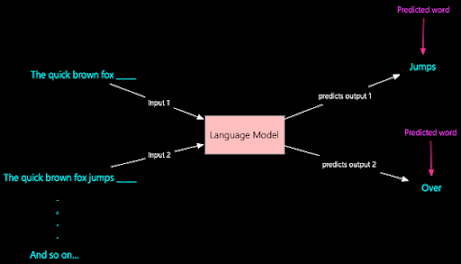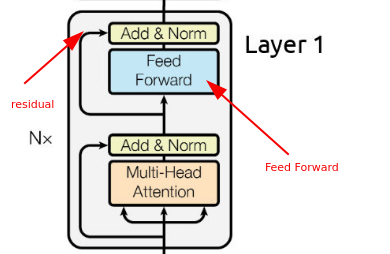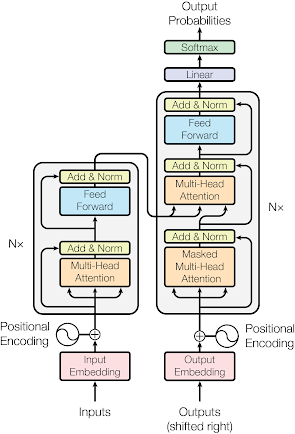Understanding Large Language Models
Architecture: The Power of Transformers
At the heart of many large language models lies the Transformer architecture, which was introduced by Vaswani et al. in the groundbreaking paper "Attention Is All You Need" in 2017. The Transformer architecture has since become the backbone of numerous state-of-the-art language models. It relies on a self-attention mechanism that allows the model to weigh the importance of different words in a sentence, capturing both local and global dependencies within the text. The primary components of the Transformer architecture are:
1. Self-Attention Mechanism:
- The self-attention mechanism lies at the core of Transformers and is responsible for capturing relationships between words in a sentence. It allows the model to assign different weights or attention scores to each word based on its relevance to other words in the sequence. This mechanism enables the model to understand the context and dependencies between words, regardless of their distance from each other.
- In mathematical terms, given an input sequence of embeddings (usually word embeddings), the self-attention mechanism computes attention scores using three learnable matrices: Query, Key, and Value. These matrices are linear transformations of the input embeddings. The attention scores determine how much focus each word should place on other words when computing its representation.
- Transformers employ multiple self-attention mechanisms, referred to as "heads," to capture different types of relationships between words. Each head is responsible for learning a different aspect of context. For instance, one head might capture syntactic relationships, while another focuses on semantic relationships.
- These different heads work in parallel, and their output representations are concatenated and linearly transformed to produce the final output of the attention layer. Multi-head attention enhances the model's ability to capture diverse patterns and nuances in the input sequence.
- Unlike recurrent neural networks (RNNs) or convolutional neural networks (CNNs), Transformers do not inherently understand the order of words in a sequence. To overcome this limitation, positional encodings are added to the input embeddings. These encodings convey information about the position of each word in the sequence, enabling the model to differentiate between words with the same embedding but different positions.
- Positional encodings are usually calculated using trigonometric functions or learned during the training process. They are then added element-wise to the input embeddings before being fed into the model.
- After the self-attention mechanism, the output representations are passed through feedforward neural networks (FFNs). These networks consist of fully connected layers and are applied independently to each position in the sequence.
- The FFNs serve as a transformation layer that further refines the representations captured through self-attention. The non-linear activation functions in FFNs enable the model to learn complex relationships within the input data.
- To ensure stable training and faster convergence, each sub-layer (self-attention and FFN) is followed by layer normalization and a residual connection. The residual connection adds the output of the sub-layer to the original input, effectively allowing the model to learn incremental changes to the input data.
- Transformers consist of multiple identical layers stacked on top of each other. This stacking allows the model to learn hierarchical features and abstract representations of the input sequence. Deeper architectures with more layers have been shown to capture richer patterns in the data but also require more computational resources.
- Collectively, these components work in harmony to make Transformers powerful language models capable of understanding, generating, and manipulating human language with impressive accuracy and flexibility.
Historical Evolution of Large Language Models
State-of-the-Art Models and Breakthroughs
- GPT-3 and GPT-4: Developed by OpenAI, the Generative Pre-trained Transformer 3 (GPT-3) was one of the most advanced language models at the time. It had 175 billion parameters and demonstrated impressive performance on various language tasks, including translation, text generation, and question-answering.
- BERT: BERT (Bidirectional Encoder Representations from Transformers) revolutionized the field of natural language processing by pretraining a deep bidirectional transformer model on a large text corpus. It achieved state-of-the-art results on a wide range of NLP tasks.
- AlphaFold: DeepMind's AlphaFold made significant progress in the field of protein folding prediction. This breakthrough had the potential to revolutionize drug discovery and bioengineering by accurately predicting the 3D structures of proteins.
- Vision Transformers (ViT): ViT applied the transformer architecture to image recognition tasks and showed that transformers could be successful in the computer vision domain, challenging the dominance of convolutional neural networks (CNNs).
- DALL-E and CLIP: OpenAI introduced DALL-E, a model capable of generating creative and coherent images from textual descriptions, and CLIP, a model that learned to understand images and text together. These models pushed the boundaries of multimodal understanding.
- Reinforcement Learning Advances: There were ongoing breakthroughs in reinforcement learning, with algorithms like DQN, PPO, and SAC achieving impressive results in training agents to play complex games and control systems.
Applications of Large Language Models
- Natural Language Understanding (NLU): LLMs excel at understanding context and semantics, making them ideal for sentiment analysis, entity recognition, and text classification.
- Natural Language Generation (NLG): These models are used to generate human-like text for chatbots, content creation, and more.
- Machine Translation: LLMs have proven their effectiveness in translating text from one language to another, achieving impressive results in reducing language barriers.
- Text Summarization: These models can automatically summarize long texts, making them valuable tools for information extraction.
- Question Answering: LLMs can be fine-tuned to answer questions based on a given context, enabling intelligent conversational agents.
Implementation: Bringing Transformers to Life
Implementing large language models involves several steps:
- Data Collection: Gather a diverse and extensive dataset that covers the domain of interest.
- Preprocessing: Clean and tokenize the text data, preparing it for input to the model.
- Model Architecture: Build a Transformer-based architecture, adjusting parameters like the number of layers, heads, and dimensions.
- Training: Train the model on the preprocessed data, utilizing powerful hardware and techniques like gradient accumulation.
- Fine-Tuning: Tailor the pre-trained model to specific tasks by fine-tuning on a smaller dataset related to the task.
- Inference: Deploy the trained model for predictions, leveraging the power of GPUs or TPUs for efficient processing.
Fine-tuning an LLM
pip install transformersfrom transformers import GPT2Tokenizer, GPT2ForSequenceClassification, AdamW
import torch
# Load pretrained GPT-2 model for sequence classification
model_name = "gpt2" # You can choose other variants like "gpt2-medium", "gpt2-large", etc.
tokenizer = GPT2Tokenizer.from_pretrained(model_name)
model = GPT2ForSequenceClassification.from_pretrained(model_name)
# Modify the model for binary classification
model.config.num_labels = 2from torch.utils.data import Dataset, DataLoader
class SentimentDataset(Dataset):
def __init__(self, texts, labels, tokenizer, max_length):
self.texts = texts
self.labels = labels
self.tokenizer = tokenizer
self.max_length = max_length
def __len__(self):
return len(self.texts)
def __getitem__(self, idx):
text = self.texts[idx]
label = self.labels[idx]
encoding = self.tokenizer(text, truncation=True, padding="max_length", max_length=self.max_length, return_tensors="pt")
input_ids = encoding["input_ids"].squeeze()
attention_mask = encoding["attention_mask"].squeeze()
return {
"input_ids": input_ids,
"attention_mask": attention_mask,
"labels": torch.tensor(label)
}
# Assuming you've loaded your dataset into 'train_texts', 'train_labels', 'val_texts', 'val_labels'
train_dataset = SentimentDataset(train_texts, train_labels, tokenizer, max_length=64)
train_dataloader = DataLoader(train_dataset, batch_size=8, shuffle=True)
val_dataset = SentimentDataset(val_texts, val_labels, tokenizer, max_length=64)
val_dataloader = DataLoader(val_dataset, batch_size=8)device = torch.device("cuda" if torch.cuda.is_available() else "cpu")
model.to(device)
optimizer = AdamW(model.parameters(), lr=2e-5)
for epoch in range(5): # You can adjust the number of epochs
model.train()
total_loss = 0
for batch in train_dataloader:
input_ids = batch["input_ids"].to(device)
attention_mask = batch["attention_mask"].to(device)
labels = batch["labels"].to(device)
optimizer.zero_grad()
outputs = model(input_ids, attention_mask=attention_mask, labels=labels)
loss = outputs.loss
loss.backward()
optimizer.step()
total_loss += loss.item()
avg_loss = total_loss / len(train_dataloader)
print(f"Epoch {epoch+1}/{5} - Average Loss: {avg_loss:.4f}")
# After training, evaluate the model on the validation set
model.eval()
correct = 0
with torch.no_grad():
for batch in val_dataloader:
input_ids = batch["input_ids"].to(device)
attention_mask = batch["attention_mask"].to(device)
labels = batch["labels"].to(device)
outputs = model(input_ids, attention_mask=attention_mask)
predictions = torch.argmax(outputs.logits, dim=1)
correct += torch.sum(predictions == labels).item()
accuracy = correct / len(val_dataset)
print(f"Validation Accuracy: {accuracy:.2%}")





Comments
Post a Comment